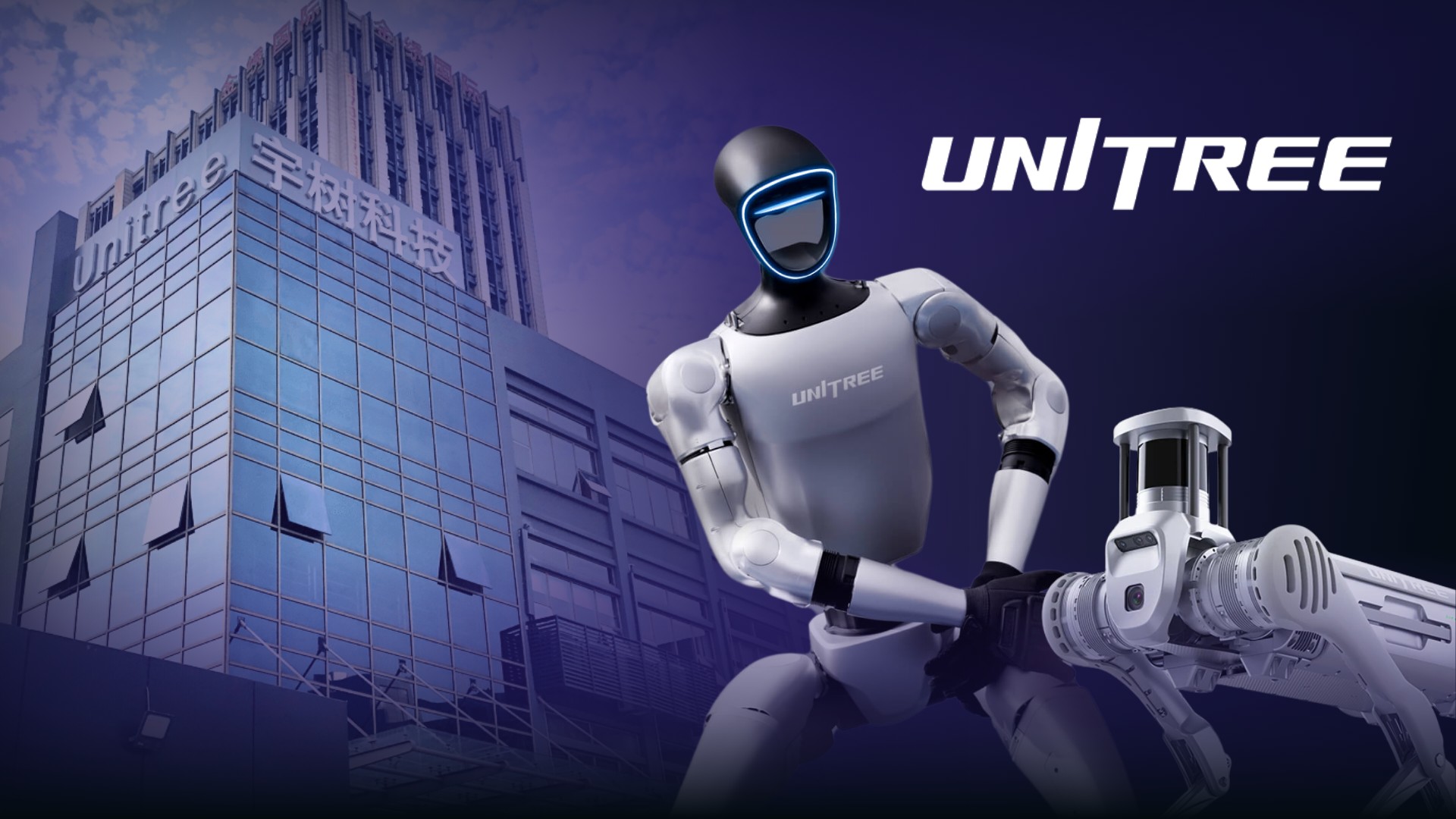Unitree G1 EDU Standard (U1) Humanoid Robot
Unitree G1 EDU Plus (U2) Humanoid Robot
Unitree G1 EDU Ultimate A (U3) Humanoid Robot
In the latest video of Supercar Blondie’s YouTube channel, Sergi Galiano takes viewers behind the scenes at Unitree Robotics’ headquarters in China. The visit provides an up-close look at their newest quadrupeds and humanoids, highlighting how far these robots have come in agility, control, and real-world utility. Far from being experimental prototypes, these platforms are designed for active roles in inspection, logistics, research, and more.
From agile quadrupeds navigating rough environments to humanoid robots capable of martial-arts-style movement, Unitree’s latest platforms blend performance, intelligence, and adaptability in a way few others do. As Supercar Blondie puts it: “One of the most memorable moments of the video was a live boxing demonstration between a human and the G1 humanoid robot.” This short scene highlights the G1’s real-time balance, motion control, and the growing realism of bipedal robotics — not just in labs, but in dynamic, real-world conditions.
The demos go beyond eye-catching performance — they demonstrate how Unitree’s robots are already being put to work in real settings like research labs, classrooms, warehouses, and inspection sites. These aren’t future concepts; they’re fully deployable systems. And with multiple models available for purchase— robotics enthusiasts and professionals alike can start exploring advanced mobility and autonomy today.
Founded in 2016 by Wang Xingxing after his 2013 XDog postgraduate project at Shanghai University, Unitree Robotics has rapidly transitioned from academic prototypes to market-ready mobile robots. The company prides itself on delivering high-performance platforms—like the G1 humanoid, launched into mass production in August 2024, and the all-terrain Go2 and B2-W quadrupeds showcased at CES 2025.
Unitree also supports its hardware with continuous over-the-air updates, ensuring each robot gets the latest AI, mobility, and performance enhancements as soon as they’re available. With new humanoid features and models on the horizon, the company’s roadmap signals even more innovation ahead.
As part of their visit to Unitree’s headquarters, the Supercar Blondie team tested several of the company’s flagship robots — including the Go2 and B2 quadrupeds, and the G1 and H1 humanoids. The video brings their capabilities to life, showing them navigate stairs, recover from impacts, maintain dynamic balance, and execute complex, coordinated movements in realistic testing scenarios — effectively translating technical specs into visible, real-world performance.
Unitree also supports its hardware with continuous over-the-air updates, ensuring each robot gets the latest AI, mobility, and performance enhancements as soon as they’re available. With new humanoid features and models on the horizon, the company’s roadmap signals even more innovation ahead.
These scenes highlight the advanced motion control, AI navigation, and mechanical precision that enable Unitree’s robots to perform in demanding, real-world applications. Together, the demos underscore the company’s shift from R&D to production-ready systems already in use across education, logistics, industrial inspection, and research sectors.
The Go2 weighs just 15 kg yet reaches speeds above 2.5 m/s, making it one of the fastest consumer-grade quadrupeds on the market. Its 360°×90° LiDAR sensing (down to 0.05 m) and AI-driven gaits—backflips, adaptive rollovers, precise side-to-side movements—deliver unrivaled terrain agility. Powered by an 8 000 mAh battery (extendable via optional packs) for up to two hours of continuous use, the Go2 also benefits from regular over-the-air software updates, keeping its performance sharp for research, inspection, and interactive demonstrations.
The B2 is Unitree’s industrial grade quadruped platform, engineered with high-torque brushless leg modules and an all-metal chassis to carry up to 120 kg at speeds of 2.5 m/s—tackling grass, gravel, and even stairs with stable, agile motion. Its B2-W “Wheeled” variant retains the same rugged frame and sensor suite (360° LiDAR, HD cameras) but adds high-torque in-wheel motors on the hind legs, delivering faster roll speeds over flat ground while preserving legged mobility for obstacles—making it equally adept at rapid industrial inspections, logistics hauling, or mixed-terrain patrols.
The G1 is Unitree’s flagship first affordable humanoid of its size, standing 1.32 m tall and weighing around 35 kg, with 23 axes of joint movement that enable it to walk, jog at up to 4.4 mph, and even perform dynamic maneuvers like back-flips or martial-arts routines. Its hybrid force–position control and advanced AI framework continuously refine balance recovery and gait precision, while onboard LiDAR and vision sensors provide 360° environmental awareness. Mass-produced since August 2024, the G1 combines mechanical agility and software-driven adaptability for applications ranging from research and inspection to disaster response and interactive service roles.

The H1 is Unitree’s pioneering full-size humanoid, standing approximately 1.8 m tall and weighing 47 kg, engineered with 27 degrees of freedom for human-like articulation and a peak joint torque of up to 360 N·m. It combines a 360° Livox MID360 LiDAR and Intel RealSense D435i depth camera for precise spatial mapping with a walking speed of up to 1.5 m/s, enabling it to traverse and inspect complex environments. In Supercar Blondie’s tour, H1 demonstrated stair-climbing and dynamic balance recovery under external pushes—proof of its robust control architecture. Its modular, ROS-compatible design makes H1 an ideal research and industrial platform, offering a solid foundation for developing advanced bipedal applications.
Supercar Blondie’s feature captures firsthand how Unitree’s robots perform in real-world conditions—handling uneven terrain, recovering from balance disruption, and executing coordinated movements. These aren’t prototypes confined to labs; they’re built for functionality, with modular hardware, autonomous systems, and OTA updates that support ongoing field use. In research, education, inspection, and autonomous mobility, Unitree’s platforms are proving they’re ready for operational roles — now and into the future.
Whether you’re looking to integrate agile quadrupeds into fieldwork or experiment with cutting-edge humanoids, you’ll find a broad selection of Unitree models at RobotShop—your trusted source for advanced robotics.
